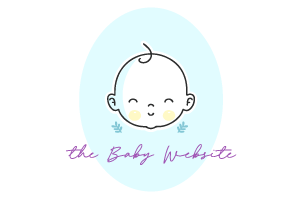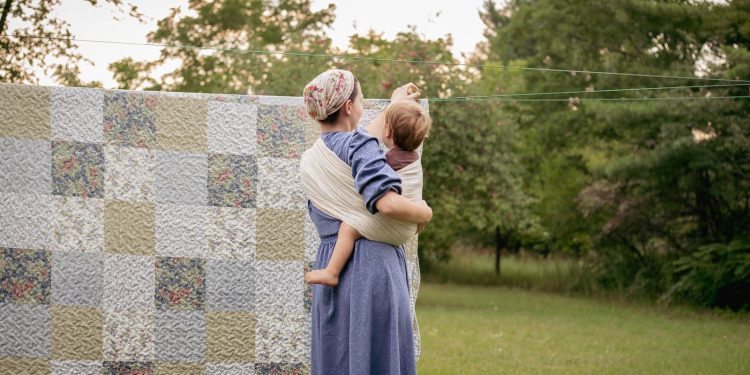Babywearing has been a popular practice for centuries, providing parents with a hands-free way of carrying their babies while offering numerous benefits to both parent and child. In this guide, we will provide you with all the essential information you need to know about babywearing, including its definition, history, benefits, types of carriers available, and safety tips.
What is Babywearing?
Babywearing is the practice of carrying an infant or toddler in a sling or carrier that is worn by a caregiver. It has been used by parents and caregivers for centuries to keep babies close and safe.
Types of Carriers
There are several types of baby carriers available, including wraps, slings, mei tais, and structured carriers. Each type of carrier has its own unique features, benefits, and drawbacks, and it is essential to choose the right carrier that suits your needs and your baby’s age and size.
- Wraps
- Slings
- Mei Tais
- Structured Carriers
Choosing the Right Carrier
Choosing the right carrier for your baby is crucial. A poorly fitting or unsafe carrier can cause discomfort and even be dangerous. Consider the following factors when selecting a carrier:
- Your baby’s age and size
- Your own body size and shape
- The type of carrier that suits your needs
- The safety and comfort features of the carrier
Benefits of Babywearing
Babywearing provides a range of advantages that benefit both the caregiver and the child. The following are some of these benefits:
- Enhanced Parent-Child Bonding: Babywearing fosters a deep emotional connection between the caregiver and the child. The physical proximity achieved through babywearing can create a sense of security, trust, and attachment.
- Mobility and Convenience: Babywearing allows parents to move around effortlessly with their baby, without the inconvenience of a stroller. This is particularly advantageous in crowded or busy areas. Additionally, babywearing leaves the hands free for carrying out other tasks such as running errands or household chores.
- Improved Cognitive and Emotional Development of the Child: Studies indicate that babies carried in slings or carriers have better cognitive and emotional development than those who aren’t. Babywearing stimulates the baby’s senses, promoting their emotional well-being and brain development.
- Reduced Risk of SIDS: Babywearing might reduce the risk of sudden infant death syndrome (SIDS). It is thought to do this by regulating the baby’s breathing, heart rate, and temperature. If you keep the baby close to your body, it has a positive effect on the baby’s well-being.
- Reduced Crying and Colic: Babies who are carried in slings or carriers tend to cry less. The physical proximity provided by babywearing can soothe the baby, reducing their stress levels and promoting calmness. This is particularly beneficial for babies with colic who cry for long hours.
- Increased Milk Production in Breastfeeding Mothers: Babywearing can help increase milk production in breastfeeding mothers by stimulating the hormone oxytocin, which is vital for milk production. This can help establish and maintain a strong milk supply.
- Reduced Postpartum Depression: Babywearing can reduce the risk of postpartum depression in mothers by providing a sense of closeness and connectedness with their baby, reducing feelings of isolation and anxiety.
- Promotes Physical Development of the Child: Babywearing helps the baby develop better head and neck control, as well as stronger core muscles, by promoting an upright position. This can aid in achieving developmental milestones more quickly and improve the overall physical development of the child.
As can be seen, babywearing provides numerous and diverse benefits. Whether a caregiver is seeking to bond with their child, reduce their risk of postpartum depression, or promote the child’s physical and emotional development, babywearing is a great option to consider.
Tips for Choosing the Ideal Baby Carrier
For new parents, selecting a suitable baby carrier from the vast array available on the market can be daunting. However, the right choice can enhance your parenting experience. To find the perfect carrier for you and your baby, take into account the following tips.
- Assess Your Lifestyle: Before purchasing a carrier, consider your lifestyle. If you lead an active life and enjoy outdoor activities like hiking or running, opt for a carrier that suits such activities. Alternatively, if you prefer staying indoors, choose a more comfortable carrier suited for indoor use.
- Evaluate Baby’s Age and Weight: Your baby’s age and weight are crucial factors to consider. If you have a newborn, choose a carrier that provides excellent head and neck support. For heavier babies, a carrier that offers additional back and shoulder support is preferable.
- Evaluate Fit and Comfort: The carrier’s fit and comfort are also important considerations. Ensure that the carrier fits you comfortably, and your baby is secure and snug. Choose carriers with adjustable straps and waistbands that guarantee a custom fit for you and your baby. A carrier that evenly distributes your baby’s weight across your back and shoulders is an added advantage.
- Assess Durability and Ease of Use: When selecting a carrier, durability and ease of use are vital factors. Opt for a robust carrier that can withstand regular use and can be machine-washed. Consider carriers that are easy to put on and take off, particularly if you plan to use them frequently.
- Consider Cost: Finally, consider the cost of the carrier. While expensive carriers may offer additional features and benefits, there are budget-friendly options available that still provide excellent quality and comfort.
In conclusion, selecting the ideal carrier for you and your baby involves considering your lifestyle, baby’s age and weight, fit and comfort, durability and ease of use, and cost. By taking these factors into account, you can find the perfect carrier that suits your requirements and preferences. We urge all parents to try babywearing and discover its benefits themselves. Feel free to try different carrier types and positions and seek guidance from healthcare providers or babywearing experts if you have concerns.
Babywearing Safety Tips: Proper Positioning, Regular Checks, Hazardous Positions, and Carrier Standards
Positioning your baby correctly is crucial when babywearing. A well-positioned baby has a visible face that’s close enough to kiss, a straight back, and a chin off the chest. Make sure their airway is clear and their head and neck are supported. Keep a watchful eye on your baby’s breathing and temperature while babywearing. Avoid positions that could restrict your baby’s airway or cause them to slouch. Don’t wear your baby while driving or using machinery, as it’s unsafe for both of you.
When purchasing a carrier, choose one that meets safety standards and has good reviews from a reputable company. Avoid purchasing a carrier solely based on its appearance or low price. By following these babywearing safety tips, you can ensure a pleasant and secure experience for both you and your little one.
To sum up, babywearing can foster bonding and provide a secure and cozy spot for your child to rest. With the right carrier and following safety guidelines, you can enjoy its advantages. Babywearing has numerous benefits for parents and infants. It can enhance cognitive and emotional development, promote bonding, and offer convenience and mobility. It may lower the risk of SIDS, colic, and postpartum depression, and boost milk production in breastfeeding mothers.
Various baby carriers are available, such as ring slings, wraps, mei tais, soft-structured carriers, and backpack carriers. Each carrier type has its unique features and benefits, so it is essential to pick the one that suits your needs and preferences. When selecting a baby carrier, consider your lifestyle, your baby’s weight and age, the carrier’s fit and comfort, durability, ease of use, and cost. By weighing these factors, you can select the carrier that meets your requirements.
We urge all parents to try babywearing and discover its benefits themselves. Feel free to try different carrier types and positions and seek guidance from healthcare providers or babywearing experts if you have concerns.





